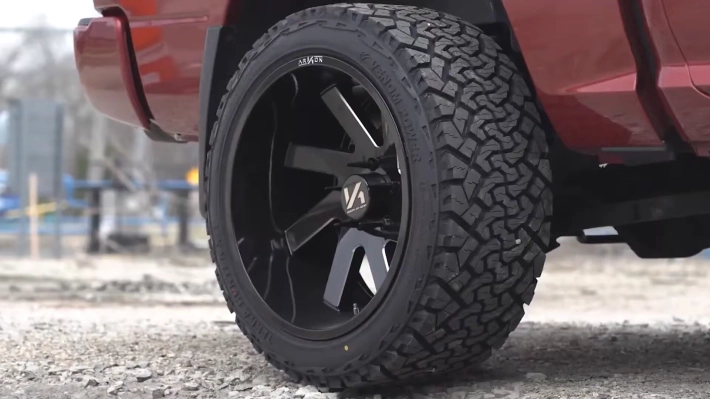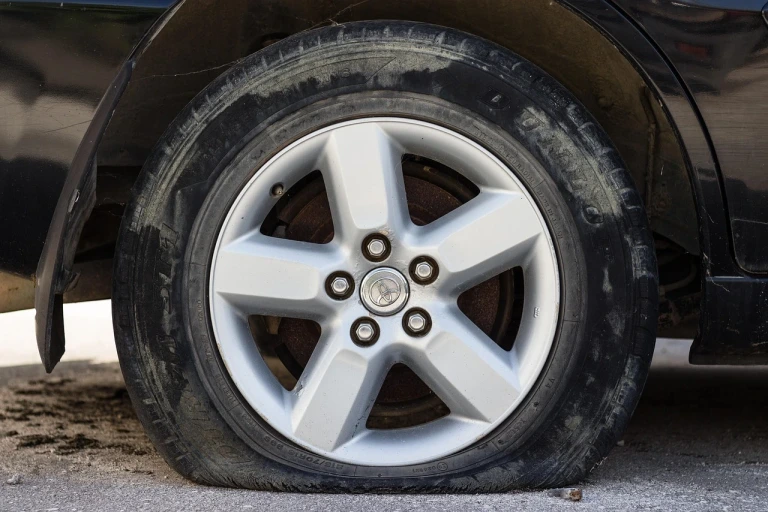When you have a flat tire, a leaky valve stem might be the problem. Knowing how to fix a leaky valve stem can save you time and money. This guide will walk you through the process step-by-step.
What Exactly is a Tire Valve Stem?
A tire valve stem is a small but essential part of your tire. It’s the small tube sticking out of your tire where you fill it with air.
Inside the valve stem is a valve core that opens to let air in and closes to keep it from escaping. Over time, the valve stem can wear out or get damaged, causing air to leak.
What Causes a Tire to Leak Around the Valve Stem?
Understanding the causes of a leaky valve stem is crucial. Here are five common reasons:
1. Aging and Wear
Over time, the materials in a valve stem can degrade. Rubber components can dry out, crack, or become brittle, leading to leaks. This aging process is natural and happens more quickly in harsh weather conditions.
2. Physical Damage
The valve stem can get damaged by impacts, such as hitting a curb or debris on the road. Even minor damages can create small cracks or breaks that allow air to escape.
3. Improper Installation
If a valve stem is not installed correctly, it can lead to leaks. This includes not tightening the valve core properly or damaging the stem during installation.
4. Corrosion
Metal parts of the valve stem, particularly in regions with road salt or high humidity, can corrode over time. Corrosion can weaken the structure of the valve stem, causing it to leak.
5. Manufacturing Defects
Occasionally, a valve stem might have defects from the manufacturing process. These defects can cause leaks even when the valve stem is relatively new.
Signs of a Leaky Valve Stem
Before you learn how to fix a leaky valve stem, you need to identify if that’s the issue. Here are some signs:
1. Hissing Sound
A continuous hissing sound coming from the valve stem area is a clear indicator of a leak. This noise is the sound of air escaping through a small gap or crack.
2. Rapid Air Loss
If you notice your tire losing air pressure quickly after being filled, the valve stem could be the culprit. A leak in the valve stem can cause the tire to deflate faster than usual.
3. Bubble Formation
Applying soapy water to the valve stem and observing bubbles can help detect a leak. If bubbles form around the valve stem, it indicates air escaping from that spot.
4. Visible Damage
Any visible cracks, splits, or other damage on the valve stem are signs of potential leaks. Regular visual inspections can help spot these issues early.
5. Loose Valve Core
If the valve core feels loose or unscrews easily, it might be leaking. The valve core should be secure and tight, but not over-tightened.
How to Fix a Leaky Valve? Step-by-Step Guide!
1. Remove the Tire:
If possible, remove the tire from your car. This makes it easier to access and fix the valve stem. If you cannot remove the tire, ensure the car is securely lifted with a jack.
2. Release the Air
Let out all the air from the tire by pressing down on the valve stem. This will make it safer to remove and inspect the valve core.
3. Remove the Valve Core Use a valve core tool to unscrew and remove the valve core from the valve stem. Keep the old valve core aside for inspection.
4. Inspect and Replace
Look at the valve core and the stem. If the core is damaged or worn out, replace it with a new one. If the stem itself is damaged, you might need to replace the entire stem, which may require professional help.
5. Reinstall the Valve Core
Screw the new or inspected valve core back into the valve stem using the valve core tool. Ensure it is securely in place but do not over-tighten it.
6. Inflate the Tire
Fill the tire with air to the recommended pressure using an air compressor or tire pump. Use a tire pressure gauge to check the pressure.
7. Check for Leaks
Apply soapy water around the valve stem and look for bubbles. If there are no bubbles, the leak is fixed. If bubbles appear, the valve core might not be tight enough, or the stem could be damaged.
Preventing Future Leaks
Knowing how to fix a leaky valve stem is useful, but preventing leaks is even better. Here are some tips:
- Regularly check your valve stems for signs of wear and tear.
- Use valve stem caps to protect them from dirt and moisture.
- Avoid over-tightening valve stem caps, as this can damage the stem.
- Replace old or damaged valve stems during routine tire maintenance.
Preventing Future Leaks
Knowing how to fix a leaky valve stem is useful, but preventing leaks is even better. Here are some tips:
- Regularly check your valve stems for signs of wear and tear.
- Use valve stem caps to protect them from dirt and moisture.
- Avoid over-tightening valve stem caps, as this can damage the stem.
- Replace old or damaged valve stems during routine tire maintenance.
Conclusion
Learning how to fix a leaky valve stem is a valuable skill for any vehicle owner. It’s a straightforward process that requires basic tools and a bit of patience. By keeping an eye on your valve stems and knowing how to address leaks, you can ensure your tires remain in good condition and keep you safe on the road. Regular maintenance and timely repairs can prevent bigger problems and extend the life of your tires.








